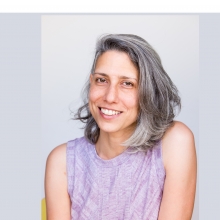Where are the female physicists? It’s not a theoretical question
Workshop addresses proactive steps to shifting the gender balance
Briefs

Tipping the gender balance: an international workshop on campus addressed the gender imbalance in phsyics
Physics has historically been a male-dominated field, but a new initiative in the Weizmann Institute’s Faculty of Physics is trying to understand why—and take proactive steps to shifting the gender balance.
In November, the faculty held a workshop that attracted physicists and gender diversity experts from around the world to analyze the problem and discuss success stories from other institutions and countries. The conference was co-led by Prof. Yossi Nir of the Department of Particle Physics and Astrophysics; Dr. Meytal Eran-Jona, a sociologist who recently became the Institute’s first Director of Diversity at the Feinberg Graduate School; and Prof. Marika Taylor, a professor of theoretical physics at of the University of Southampton in the UK. It was sponsored by the Schwartz/Reisman Institute for Theoretical Physics.
With a grant from Israel’s Ministry of Science and Technology, Prof. Nir and Dr. Eran-Jona investigated the gender imbalance in the field of physics nationwide. They found that while 38 percent of high school students who study advanced physics are girls, that percentage continues to decline throughout the stages of higher education and career choice. Only 16 percent of undergraduate physics majors are female, and only six percent of physicists in tenured or tenure-track positions are women. Just 16 women hold tenure or tenure-track or positions in physics in Israel.
“The challenges are many, starting at the high school level when girls first encounter physics, and the roadblocks continue until the point of career choice,” says Dr. Eran-Jona. One of the biggest “forks in the road,” she says, is when women consider pursuing postdoctoral positions abroad—the unwritten prerequisite to attaining a position in Israeli academia. It’s a decision that often requires uprooting a spouse and young children and surviving on a typically low postdoc salary in expensive international cities. This is a crossroads for women across the sciences, but is particularly acute in physics, “a male-dominated field where, unfortunately, women do not always feel at home,” says Prof. Nir.
Since the November workshop, several initiatives have taken root, include: launching postdoctoral grants for people with childcare responsibilities; embracing an anti-harassment legal policy for prevention and enforcement of proper workplace behavior; and enhancing female visibility as speakers in conferences and seminars.
Dr. Eran-Jona has also been working with FGS and the Faculty of Physics to adjust the student recruitment process. Additional gains include the Faculty’s exposure to and active participation in gender diversity efforts in physics worldwide, including a new affiliation with a European organization dedicated to this subject.








